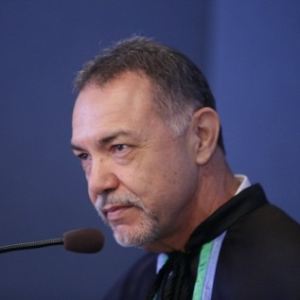Luis Jesus Villarreal Gomez, FCITEC - Universidad Autónoma de Baja California, Mexico
Will be Updated Soon...

Will be Updated Soon...

For realizing pervasive and ubiquitous health and social care services, health and social care system have to undergo an organizational, methodological and technological transformation towards personalized, participative, preventive, predictive precision medicine. For designing a [....] » Read More

The present talk will discuss experimental data regarding successful fabrication of a novel Cu2+-complex of nitrogen-rich polymer nanodots, with a mean diameter of about 20 nm extracted from transmission electron microscopy (TEM) micrographs and 350 nm obtained from dynamic light [....] » Read More

Solar ultraviolet (UV) radiation is a major environmental toxicant that contributes to inflammation, immunosuppression, and carcinogenesis. Previous studies suggest that UVB-induced oxidative stress generates oxidized lipids with platelet-activating factor (PAF) agonistic activit [....] » Read More

Hypertension is a lifestyle disorder. Mostly the disorder is asymptomatic until it gets diagnosed. Hypertension for a longer duration if gets uncontrolled can cause the problems to the eye, kidney blood vessels, and other organs. It may cause heart attack, kidney failure, or [....] » Read More

Parkinson’s Disease (PD) is the second most common neurodegenerative disorder in the world. While it primarily hinders motor functions, PD also causes cognitive dysfunctions which can progress to severe conditions like dementia. Despite the significant impacts of cognitive [....] » Read More
Title : Personalized and Precision Medicine (PPM) as a unique healthcare model based on design-inspired biotech- & biopharma-driven applications to secure the human healthcare and biosafety
Sergey Suchkov, N.D. Zelinskii Institute for Organic Chemistry of the Russian Academy of Sciences & InMedStar, Russian Federation
Despite breakthroughs in research that have led to an increased understanding of PPM-based human disease, the translation of discoveries into therapies for patients has not kept pace with medical need. Modern drugs are crucial in the field of PPM-guided drug therapy and are curre [....] » Read More
Title : Hepatotoxic botanicals-shadows of pearls
Consolato M Sergi, Universities of Alberta and Ottawa, Canada
Objective: The utilization of herbal medicines has risen globally. Recently, the possible adverse effects of certain herbs have been observed, particularly concerning hepatotoxicity associated with the consumption of herbal treatments. This review aims to assess the evidence [....] » Read More
Title : Antibody proteases as translational tools of the next step generation to be applied for biopharmacy related and precision medical practice
Sergey Suchkov, N.D. Zelinskii Institute for Organic Chemistry of the Russian Academy of Sciences & InMedStar, Russian Federation
High impact of Ab-proteases is valuable to monitor both clinical and subclinical courses of chronic autoimmune inflammation to predict stepwise transformations of the course, starting from the pre-illness and to prognosticate the clinical illness finally. This infor-mation would [....] » Read More
Title : Easily injectable, organic solvent free self assembled hydrogel platform for endoscope mediated gastrointestinal polypectomy
Hitasha Vithalani , IIT Gandhinagar, India
Endoscopic submucosal dissection (ESD) and endoscopic mucosal resection (EMR) are widely employed for removing small, flat gastrointestinal (GI) lesions, but their success depends on creating a durable submucosal cushion. Conventional injectables such as saline and hypertonic dex [....] » Read More